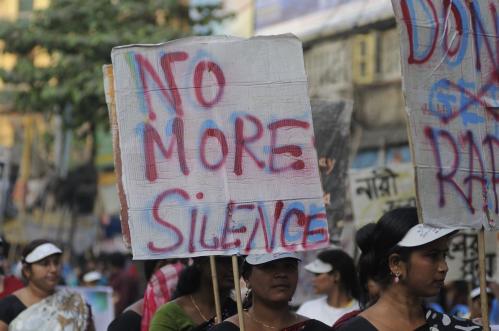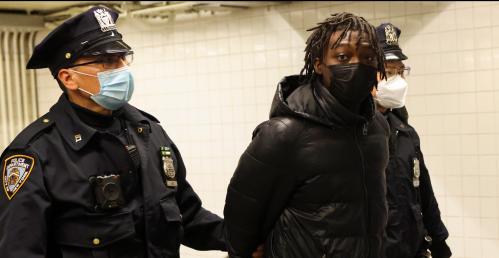Introduction: The Context and Goals of Counternarcotics Policy in Mexico
The drug-related violence and the breakdown in security in Mexico have escalated to extraordinary levels over the past two years. According to publicly available data, 6,290 people died in Mexico due to drug-related violence in 2008.1 In private, some Mexican officials give a number as high as 9,000 deaths, but even the lower figure is more than the total number of casualties in Iraq during 2008, more than in Afghanistan, and six times more than the average number for a civil war, about 1,000 people per year. During the first eight weeks of 2009, over 1,000 people have already been killed in Mexico.2 In the level of casualties, if not in the type of targets and means, the violence in Mexico is greater even than the violence that plagued Colombia in the 1980s and early 1990s when Colombia went through a similar confrontation between its drug-trafficking organizations (DTOs) and the state.
Even though the majority of those killed are people involved in the drug trade, the violence has come to affect the lives of both ordinary people who do not dare venture out of their houses at night (or even during the day) for fear of getting caught in the cross-fire, and of elites who have become targets of extortion.3 Kidnapping is markedly on the rise. While most of the kidnapping is linked to the drug trade—to intimidate and coerce recruits and involuntary participants to ensure that they deliver promised services—kidnapping for even rather meager pecuniary profits also appears to be growing, indicating a spiral of violence and criminality. Armed robbery has also increased dramatically, along with the murder rates. The cost of violence has become cheap since the state is overwhelmed, the deterrent effect of punishment by law enforcement has declined, and social and cultural restraints on violence have been degraded.
Civil society has come under serious threat with murders of journalists in Mexico among the highest in the world. The law enforcement and judicial apparatus has been similarly threatened with public officials facing the same awful choice that public officials in areas of high crime and violence often face: plata o plomo, i.e., accept a bribe or face murder. Given the existing high levels of corruption in the Mexican law enforcement apparatus, such pressure becomes all the more intense. In some areas of Mexico, the security situation has deteriorated so significantly that there is anecdotal evidence that average Mexicans, not only the upper-class, are leaving Mexico for the United States because of the lack of security in their own country—this despite the economic downturn in the U.S. and the resulting loss of job opportunities north of the border.4 Although most of the violence is highly localized along critical drug smuggling routes, few areas of Mexico are now immune from some drugrelated violence.
The economic costs for Mexico also have been substantial. Mexican states most significantly affected by violence appear to have begun experiencing reduced economic activity in terms of reduced investment, tourism, and the dramatic escalation in transaction costs such as protection rents, ransoms, and costs of bodyguards. Yet it is in the domain of public safety where the drug trade is most pernicious and where the Mexican situation is most serious.
Some of the violence is also spilling across the border to the United States. Border patrol officers are increasingly confronted by drug traffickers with firepower. Perhaps as much as 90% of the firearms used by Mexican drug trafficking organizations5 have been purchased in the United States. Murders and kidnapping of U.S. residents who (or whose relatives) are caught up in the drug trade have increased dramatically. So has the kidnapping of illegal immigrants who, sometimes snatched en masse from coyotes (people smugglers), are held for ransom to be extorted from their relatives in the United States. More and more, coyotes force illegal immigrants to carry drugs (mainly marijuana) as a payment. Because of their involvement in illegality, both groups are likely to significantly underreport abductions and kidnappings. Increasingly, such crime is leaking from border communities deeper into the U.S. border states. The number of kidnappings in Phoenix, Arizona, for example, tripled from 48 in 2004 to 241 in 2008.6 Drug turf wars among the drug trafficking organizations are beginning to occur in major cities in the U.S., such as Dallas, Texas. Still, the violence and criminality on the U.S. side of the border remain relatively low, and nowhere close to their levels in Mexico.
The policy debate about how to address the drug trade and the violence in Mexico frequently conflates three distinct policy issues. Addressing these issues suggest different strategies.
The three distinct policy questions are:
- how to significantly disrupt drug supply to the U.S., reduce consumption of illicit substances in the U.S., and reduce the global drug trade;
- how to reroute drug trafficking from Mexico; and
- how to reduce violence in the drug market in Mexico and suppress crime in Mexico to manageable levels.
Goal One: Reducing Consumption in the U.S. and Globally – The key to success in achieving Goal One is, of course, a significant reduction in demand for drugs in the U.S., Europe, and increasingly elsewhere in the world. Beyond the drug-consuming countries that have traditionally been identified as loci of consumption, such as West European countries and the United States, Iran and Pakistan have long been significant consumption countries. New large consuming markets have emerged in Russia and Asia. In Latin America, countries that formerly had been source and transit countries only, such as Brazil, have become robust and significant consuming markets as well. Mexico itself is now experiencing increases in consumption, as drug supply has increased, drugs have become a form of payment in the illicit trade, and prevention and treatment policies are lacking. In fact, just like the traditional consuming countries in the West and North and perhaps much more so the new consuming countries have frequently abdicated the responsibility to undertake robust prevention, treatment and demandreduction approaches. Further, the new markets receive minimum attention and resources.
Goal Two: Rerouting the Drug Trade from Mexico – Goal Two is extremely difficult to achieve given that the U.S. is such a dominant consumption market globally and for Latin American illicit substances specifically. From the drug trafficking organizations’ perspective, the Mexico border is too strategic to give up. Moreover, the border is long and its desert, mountain, and river terrain too difficult to permit its easy sealing off outside of legal crossings, even with the border fence that is currently under construction. At the same time, the level of flows of goods and people across the border is too high and economically important to permit inspection of the majority of vehicles at legal crossings.
The possibility always exists of a reopening of the Caribbean route through which most drugs were channeled to the United States during the 1980s and early 1990s before the U.S. undertook extensive aerial and maritime interdiction efforts in the Caribbean. The increasing use of semi-submersibles to transport cocaine from Colombia’s shore or Central America’s coast to the United States is an early indication of the DTOs’ resumed interest in the Caribbean route. However, the existing levels of enforcement there and, most significantly, the proximity of the Mexican border with the United States makes the Mexico route too convenient for traffickers to abandon. Furthermore, if such a rerouting through the Caribbean were to take place, it would likely result in increased levels of corruption and violence along the new corridor, displacing the problems from Mexico into the more vulnerable states of Central America and the Caribbean.
Goal Three: Reducing the Level of Violence in Mexico and Suppressing Crime to Manageable Levels – Goal three is where the Mexican state has potentially the greatest ability to influence developments. It is also in this domain where action by the Mexican state is absolutely critical since the provision of public safety is the irreducible function of the state.
Paradoxically, strategies for accomplishing Goals Two and Three may be somewhat contradictory, at least in the short term. A very violent illicit market, as in Mexico today, is bad not only for the legal economy, but also bad for the illegal economy. Persistent fights among the drug trafficking organizations and a lasting violent confrontation between those organizations and the state may well generate a scramble among the DTOs for a more peaceful and less enforced route. But such an outcome would not necessarily enhance public safety in Mexico. On the other hand, a global reduction in demand is critical not only for Goal One, but it will also be of enormous help with Goals Two and Three. Clearly, demand reduction needs to become the centerpiece of U.S. counternarcotics policy both at home and abroad.
However, in the rest of the paper, I will concentrate primarily on Goal Three—reducing violence in Mexico—and on the direct strategy toward accomplishing this goal. I will first describe the illegal drug economy in Mexico today. Second, I will contrast the situation in Mexico with Colombia and with Plan Colombia, to which Mexico is frequently being compared. I will argue that although public policy analyses center comparisons on and draw lessons from Plan Colombia, the better analogy for Mexico is Colombia before Plan Colombia, in the late 1980s and early 1990s. Fourth, I will provide a brief description of the Mexican response and the Mérida Initiative. I will end with recommendations for a new strategy in Mexico.



